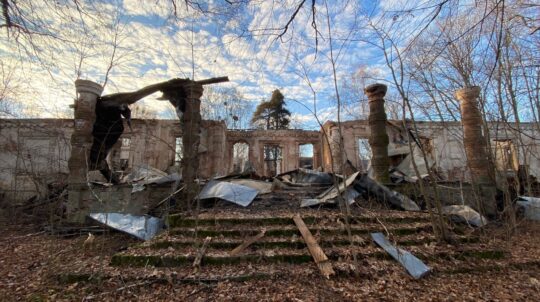Today, the exhibition “At the Origins of the Sacred Image: Icons from the Bohdan and Varvara Khanenko National Museum of Arts in Kyiv” opened at the Louvre Museum, presenting 5 out of the 16 artworks brought to France. Among them are four encaustic icons on wood from the 6th and 7th centuries, originating from the Monastery of Saint Catherine on Mount Sinai, as well as a Constantinopolitan micro-mosaic icon of the late 13th to early 14th centuries, decorated with an exceptional goldsmith framing.
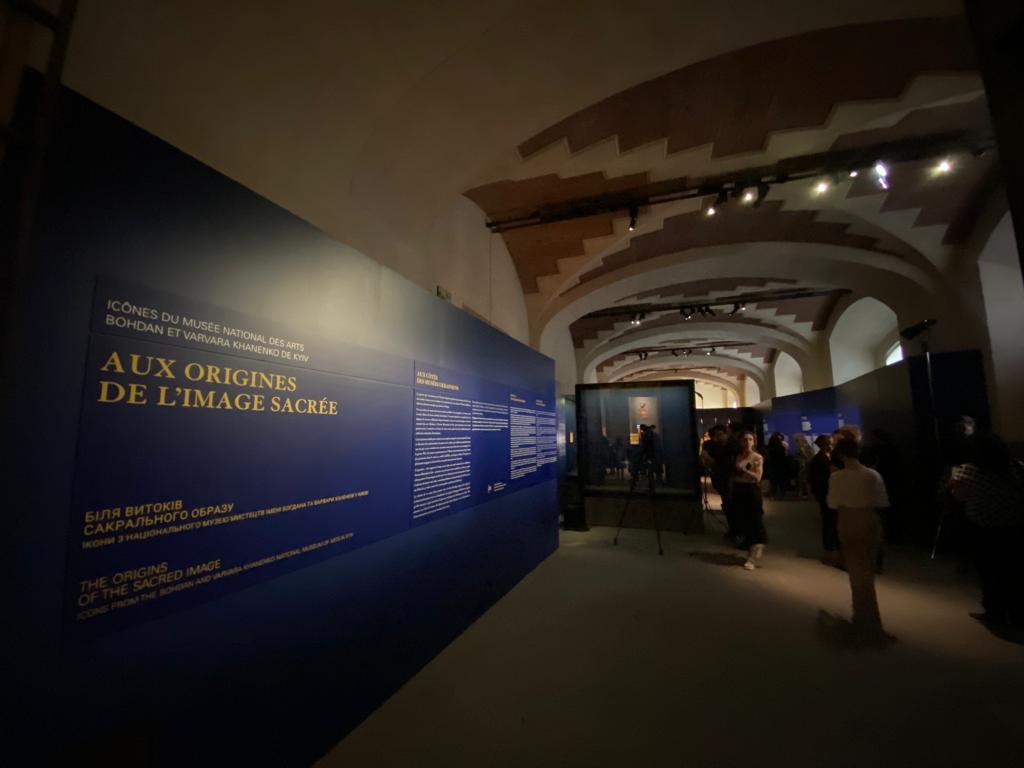
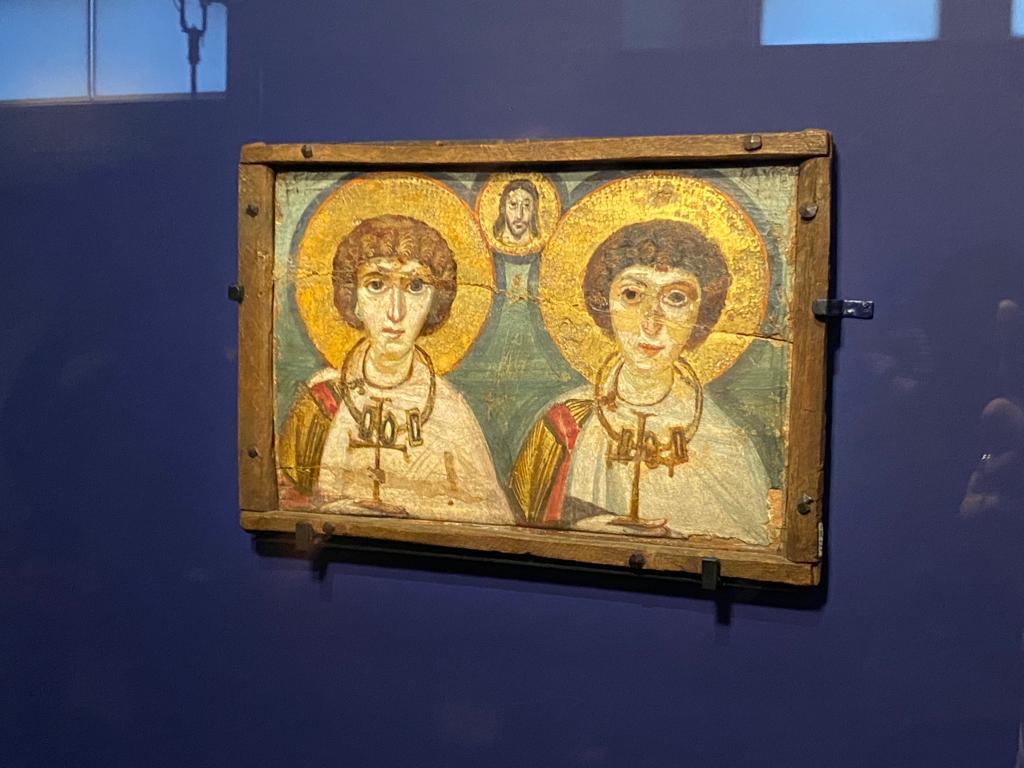
In December 2022, a memorandum was signed between the Louvre Museum, the Ministry of Culture and Information Policy of Ukraine, and the Embassy of Ukraine in Paris, aiming at expanding cooperation and establishing multi-level partnership projects with museums in Ukraine. Today’s exhibition at the Louvre is a continuation of the collaboration between these institutions.
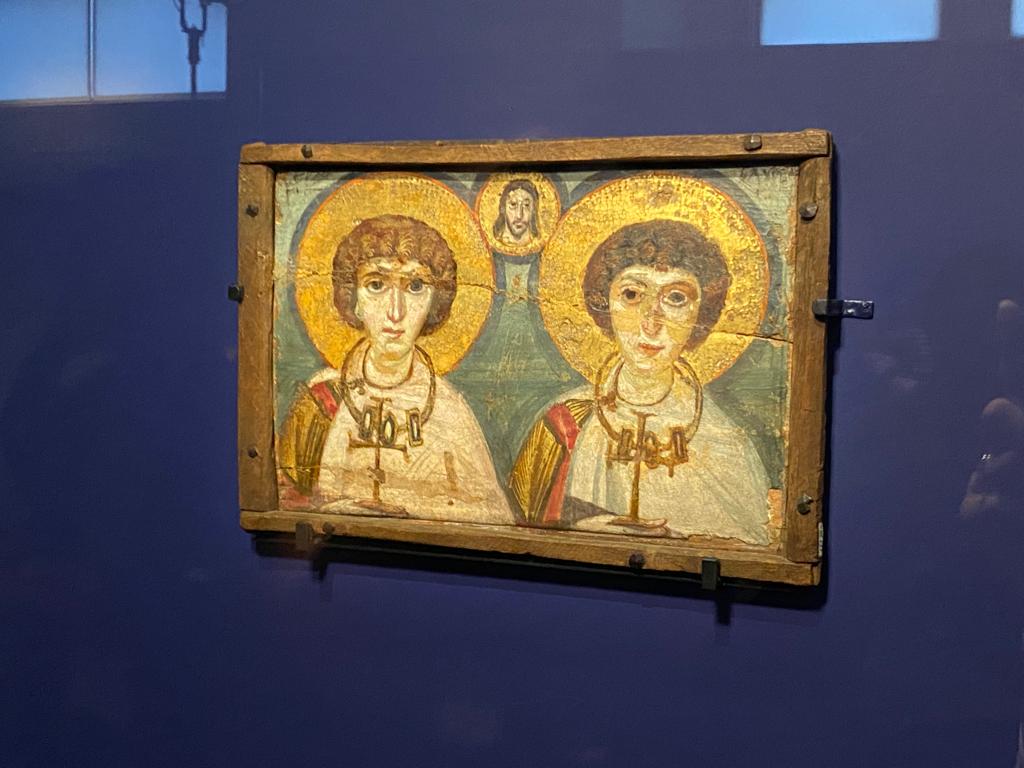
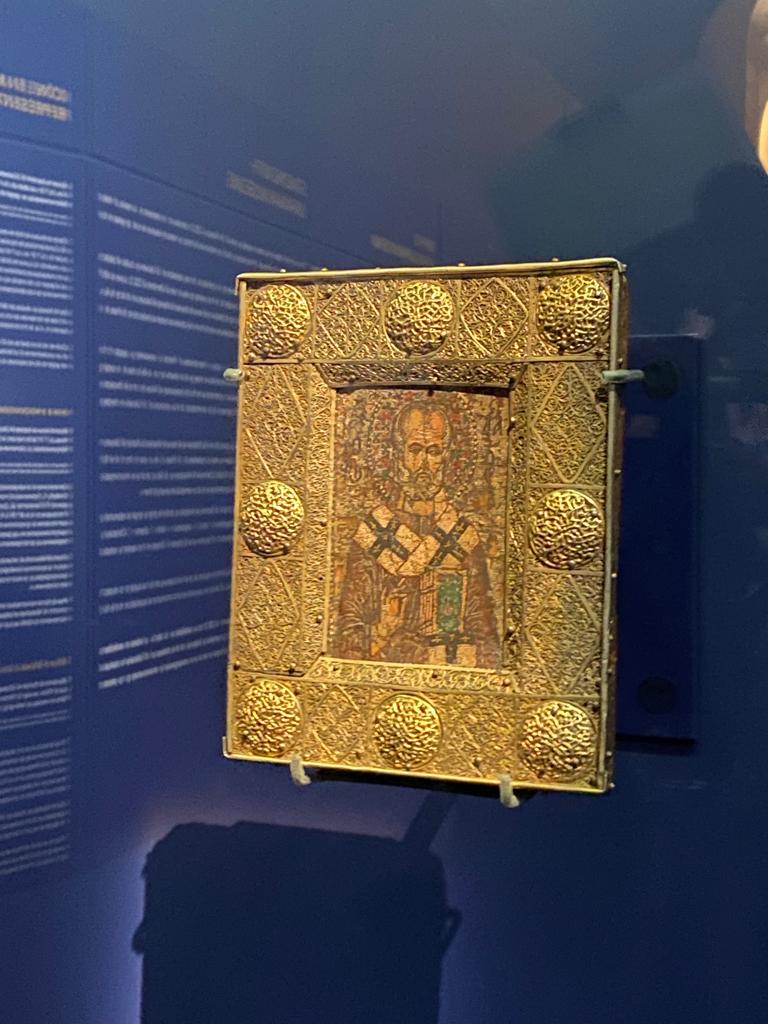
Starting from 2022, teams from both the Ministries of Culture, experts from the Louvre Museum, and the Khanenko Museum have been collaborating. This collaboration, conducted with the utmost secrecy, facilitated the transportation of sixteen artworks to France. These artworks represent some of the most remarkable pieces in Ukrainian national collections. The project was supported by the ALIPH Foundation.
In addition to being exhibited, all the masterpieces of sacred art will undergo study and scientific analysis. An international committee comprising Ukrainian scholars and international experts in this field will oversee the research process.
The exhibition effectively showcases the goals of the newly established Byzantine and Eastern Christian Art Department at the Louvre Museum. Through the simultaneous display of these five icons, it highlights the ancient heritage that gave rise to Byzantine civilization and the unique original approach introduced by it, which characterizes the expression in Eastern Christianity.
“The significant collaboration with the Ministry of Culture of France continues. The Louvre Museum, one of the most renowned and expansive museums, is accepting a part of the valuable collection from the Khanenko Museum in Kyiv for preservation. We applaud the research efforts on these collections and are thrilled with the establishment of a dedicated department at the Louvre Museum for studying Byzantine icons,” said Oleksandr Tkachenko, the Minister of Culture and Information Policy, during the exhibition opening.
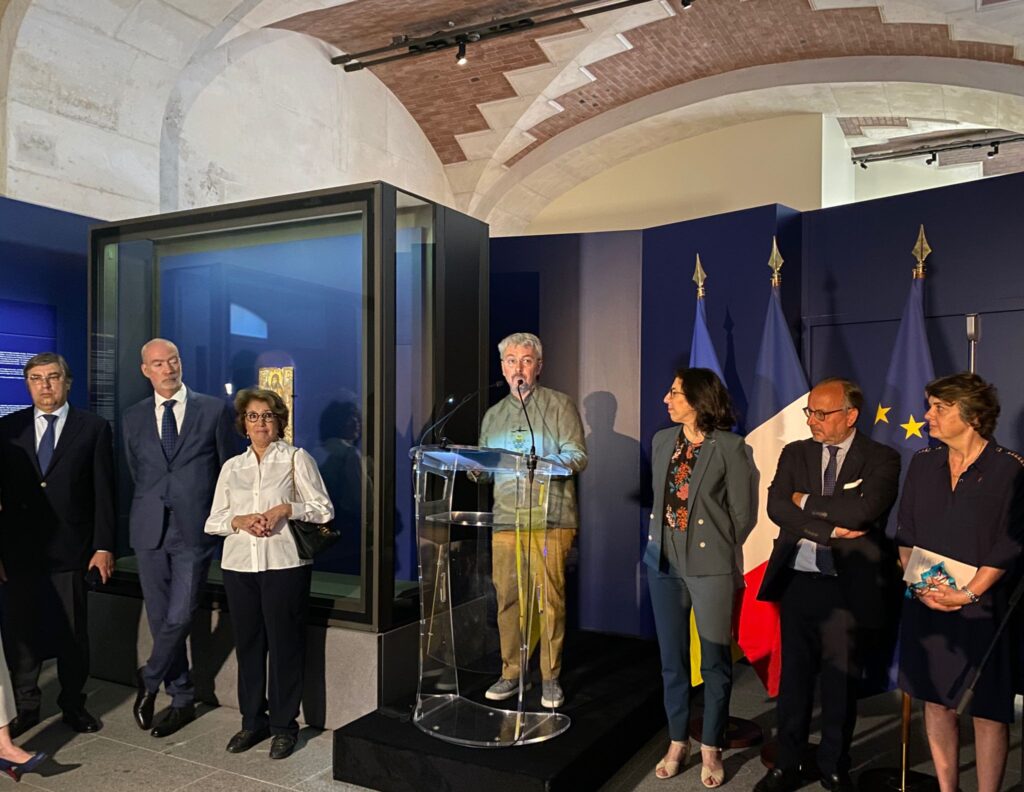
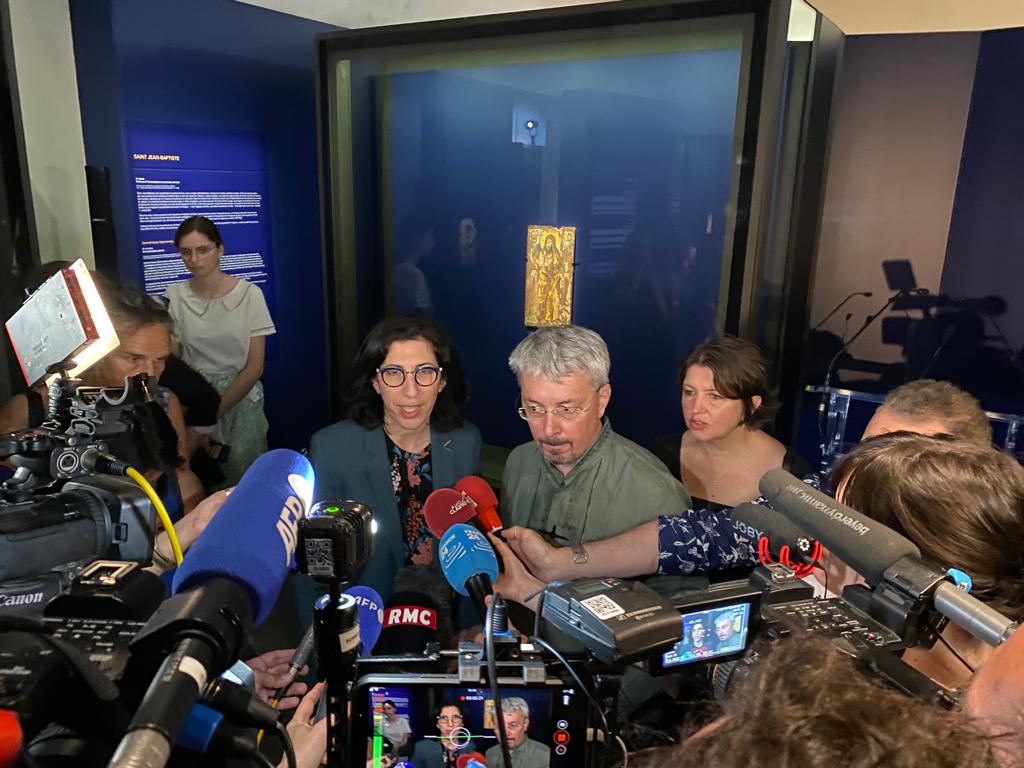
The Minister expressed gratitude to France for the targeted and particular support, such as providing internships for Ukrainian museum workers under agreements between the MCIP and the Ministry of Culture of France.
“In the post-war period, our museums will face challenges in restoring artworks, re-exhibiting them, and establishing a new system of audience interaction. Museum workers are already addressing issues of barrier-free and inclusivity. Therefore, it is crucial to share experience and adopt the best European practices in museum management. I am grateful to all museum workers in Ukraine who, despite all the threats, preserve collections and enable projects of genuine global importance,” said the Minister.
At the opening ceremony of the exhibition, the Acting Director of the Khanenko Museum, Yulia Vaganova, was present.
“Over the past year, the Khanenko museum has shown incredible resilience and has become a place of solidarity, attention, and mutual respect for different communities. It is these principles that have made today’s collaboration with the Louvre possible. The project is based on shared research and scientific interest between the two institutions, supported by professional expertise. The presented exhibits are part of Ukrainian heritage and are the artworks of world importance in Byzantine art. Recently, the Louvre Museum has embarked on major work to establish a department of Byzantine art, conducting and updating existing research. The works from the Khanenko collection are among the first in this joint research program. We thank our colleagues for their support and for jointly being a stronghold in challenging times,” she said.
About icons
The icons of Saint John the Baptist, the Virgin Mary with the Christ Child, Saints Sergius and Bacchus, and Saints Plato and Glykeria from the collection of the Khanenko Museum in Kyiv date back to the 6th and 7th centuries and are key to the history of painting. The exhibition of these artworks at the Louvre Museum is a significant event, as they belong to those rare icons originating from the monastery of Saint Catherine on Mount Sinai and are preserved outside of Egypt. Created using the encaustic painting technique, these four icons are exceptionally unique sites from the earliest period in the history of icon painting.
Another icon, made of micro-mosaic and depicting Saint Nicholas, belongs to the period of the Byzantine Empire from the late 13th to the early 14th century. This precious icon represents an exceptional example of a particularly delicate technique that the workshops of Constantinople (modern-day Istanbul, Türkiye) began using in the second half of the 12th century. To this day, only about 50 copies have been preserved, and among them, two are housed in the Louvre Museum.
About the Khanenko Museum
The Bohdan and Varvara Khanenko National Museum of Arts is the most significant Ukrainian institution dedicated to world art history. It houses approximately twenty-five thousand works of art from ancient, Byzantine, European and Asian art.
The collection owes its existence to the passion for art of Ukrainian entrepreneurs and philanthropists Bohdan and Varvara Khanenko. They made their first purchases during their honeymoon trip to Italy in 1874. Initially, the couple started collecting art for themselves, aiming to create an encyclopedic collection. However, they later envisioned making it accessible to the world public.

